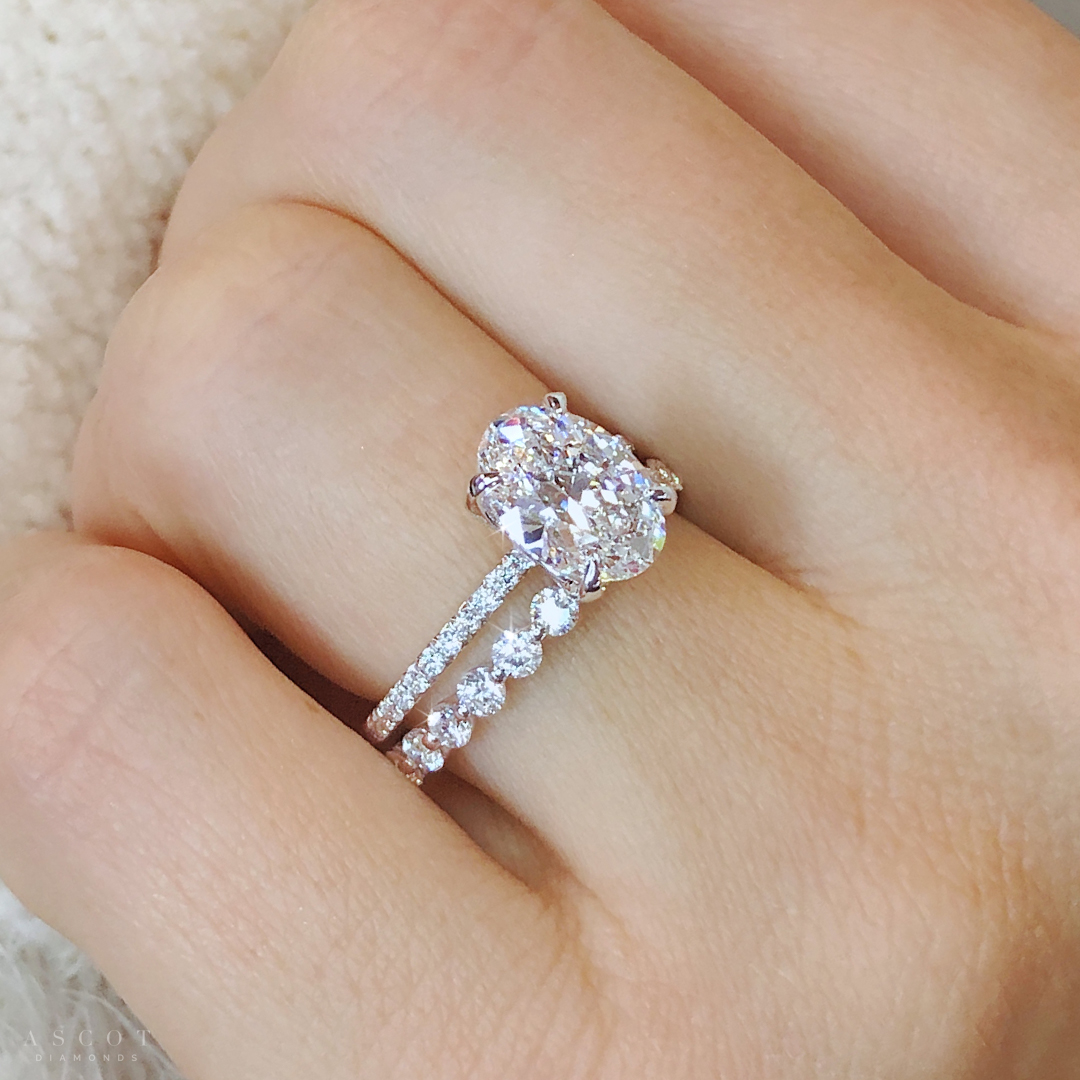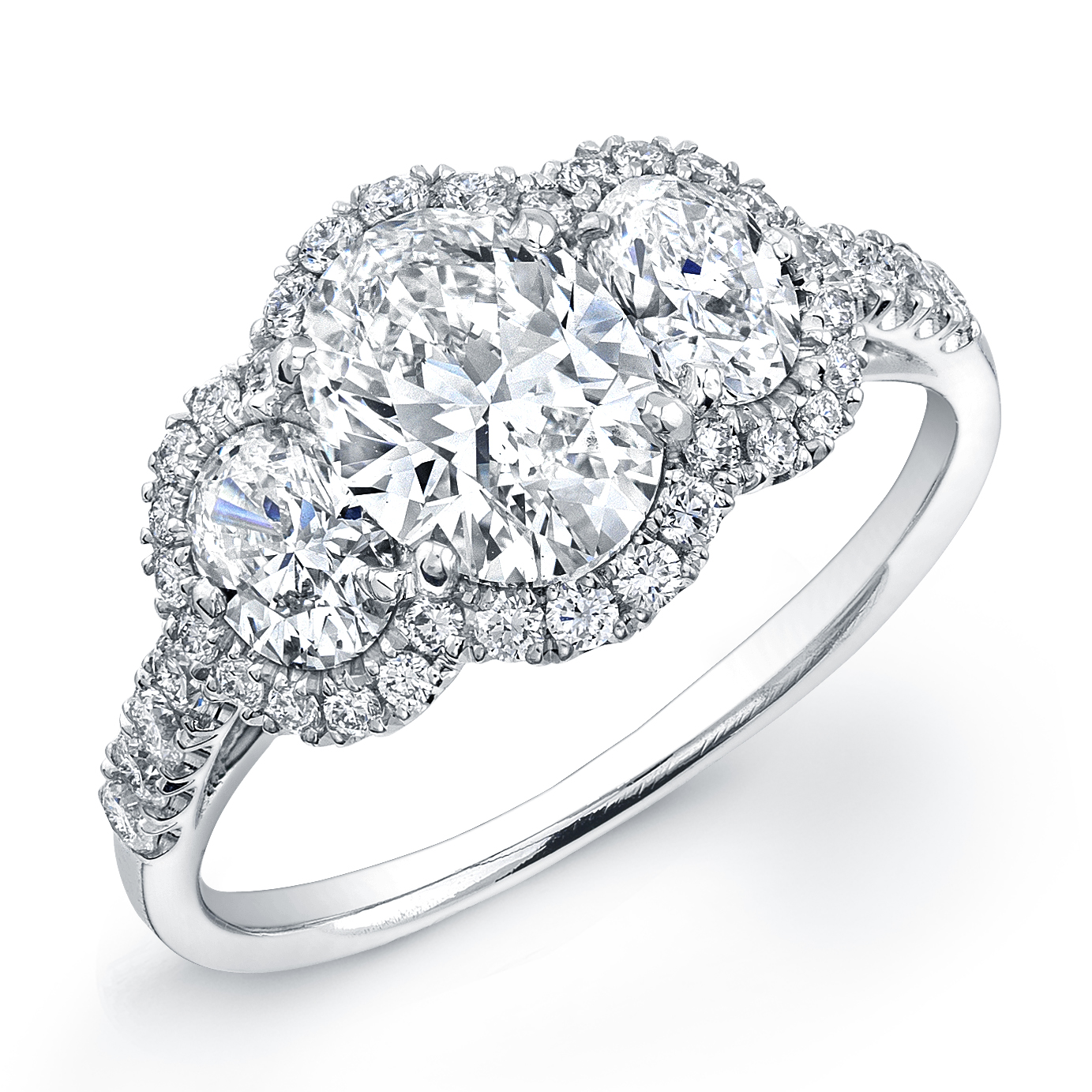For centuries, the diamond ring has captivated hearts and minds, becoming the quintessential symbol of love, commitment, and eternal devotion. More than just a piece of jewelry, it is a wearable testament to promises made, a legacy passed down through generations, and a sparkling beacon of life’s most cherished moments. From its ancient origins to its modern-day interpretations, the journey of the diamond ring is as multifaceted and brilliant as the stone itself.
A Glimpse into History: The Enduring Legacy
The story of the diamond ring is steeped in history, intertwining with cultural traditions and significant historical figures. While diamonds were discovered as early as 4th century BC in India, their use in rings, particularly for betrothal, began much later.
Ancient Egyptians are often credited with the earliest form of engagement rings, though these were simple bands of braided reeds or leather worn on the third finger of the left hand, believed to contain the "vena amoris" or "vein of love" leading directly to the heart. The Romans later adopted this tradition, using iron rings to signify a man’s ownership of his wife, and later gold rings to denote wealth.
The first documented use of a diamond ring for an engagement occurred in 1477, when Archduke Maximilian of Austria proposed to Mary of Burgundy. His choice of a diamond, arranged in the shape of an "M," set a precedent for royalty and nobility, slowly cementing the diamond’s status as the ultimate symbol of commitment. However, it wasn’t until the late 19th and early 20th centuries, with the discovery of vast diamond mines in South Africa, that diamonds became more accessible, albeit still exclusive.
The true popularization of the diamond engagement ring as we know it today can largely be attributed to the clever marketing campaigns of De Beers. In the 1930s, facing declining diamond sales, De Beers launched its iconic "A Diamond Is Forever" slogan in 1947. This brilliant campaign linked diamonds intrinsically with everlasting love, rarity, and enduring value, transforming them from a luxury item into an essential component of the marriage proposal, a tradition that continues to thrive globally.
The Heart of the Matter: Understanding the Diamond (The 4Cs)
At the core of every diamond ring is, naturally, the diamond itself. To truly appreciate its beauty and value, one must understand the "4Cs": Cut, Color, Clarity, and Carat Weight. These four characteristics, established by the Gemological Institute of America (GIA), provide a universal standard for evaluating diamond quality.
1. Cut: The Master of Sparkle
Often considered the most crucial of the 4Cs, the cut of a diamond refers not to its shape (like round, princess, or oval) but to how well its facets interact with light. A masterfully cut diamond will exhibit three primary attributes:
- Brilliance: The total white light reflected from the diamond.
- Fire: The dispersion of light into the colors of the rainbow.
- Scintillation: The flashes of light and dark, or sparkle, produced when the diamond moves.
An excellent cut ensures that light entering the diamond is reflected back through its top, creating maximum sparkle. A poorly cut diamond, even with perfect color and clarity, will appear dull and lifeless because light escapes from the sides or bottom. Cut grades range from "Excellent" to "Poor," with "Excellent" cuts commanding the highest premium due to the skill and precision required in their crafting.
2. Color: The Absence of Hue
Diamond color refers to the absence of color in white diamonds. The GIA color scale ranges from D (completely colorless, the most rare and valuable) to Z (light yellow or brown). Diamonds are formed deep within the earth, and trace elements like nitrogen can impart a yellow tint. While completely colorless diamonds (D-F) are highly prized, "near-colorless" diamonds (G-J) offer excellent value, often appearing colorless to the naked eye, especially when mounted in white gold or platinum. Fancy colored diamonds (e.g., pink, blue, yellow, green) are graded on a separate scale and are exceptionally rare and valuable.
3. Clarity: The Fingerprint of Nature
Clarity measures the absence of inclusions (internal flaws) and blemishes (external imperfections) within a diamond. Diamonds are natural wonders, and most contain tiny imperfections, often microscopic, that are a result of their formation process. The GIA clarity scale ranges from Flawless (FL), meaning no inclusions or blemishes visible under 10x magnification, to Included (I1, I2, I3), where inclusions are visible to the naked eye.
Most diamond buyers seek "eye-clean" diamonds, meaning the inclusions are not visible without magnification. VS1 (Very Slightly Included) and VS2 diamonds, or even SI1 (Slightly Included) and SI2, often fall into this category, offering a beautiful appearance without the premium price of Flawless or Internally Flawless stones.
4. Carat Weight: The Measure of Size
Carat weight is often misunderstood. It refers to the weight of the diamond, not its size. One carat equals 200 milligrams. While a larger carat weight generally means a larger diamond, the actual visible size can be influenced by the diamond’s cut. A well-cut diamond may appear larger than a poorly cut diamond of the same carat weight because more of its weight is distributed to its top diameter. Carat weight significantly impacts price, with diamonds reaching key milestones (e.g., 0.5 ct, 1.0 ct) seeing disproportionate price jumps.
The Perfect Embrace: Ring Settings and Metals
While the diamond is the star, the ring setting and metal are its crucial supporting cast, enhancing its beauty and defining the ring’s overall aesthetic.
Ring Settings: A Style for Every Story
The setting is the metal structure that holds the diamond in place, protecting it and showcasing its brilliance. Popular settings include:
- Solitaire: The classic, timeless choice, featuring a single diamond prominently displayed, typically held by prongs. It maximizes light return to the diamond.
- Pave: Small diamonds are set closely together, creating a surface that appears "paved" with diamonds, adding sparkle and enhancing the center stone.
- Halo: A circle of smaller diamonds surrounds the center stone, making it appear larger and adding incredible sparkle.
- Three-Stone: Symbolizing the past, present, and future, this setting features a larger center diamond flanked by two smaller ones.
- Bezel: The diamond is fully or partially encircled by a metal rim, offering maximum protection and a sleek, modern look.
- Channel: Diamonds are set within a channel created by two strips of metal, offering a secure and smooth finish, often used for wedding bands or accent stones.
- Vintage/Art Deco: These settings draw inspiration from historical eras, featuring intricate filigree work, milgrain detailing, and geometric patterns.
Metals: The Foundation of Beauty
The choice of metal significantly impacts the ring’s durability, appearance, and hypoallergenic properties.
- Platinum: A naturally white, dense, and durable metal. It is hypoallergenic and develops a beautiful patina over time. Its strength makes it an excellent choice for securing diamonds.
- Gold: Available in various karats (10K, 14K, 18K), indicating its purity.
- Yellow Gold: The traditional choice, offering a warm, classic look.
- White Gold: An alloy of gold with white metals (like palladium or nickel), often rhodium-plated for a bright, silvery finish. It requires re-plating over time.
- Rose Gold: An alloy of gold and copper, creating a romantic, rosy hue that complements many skin tones.
The Journey of Acquisition: A Buyer’s Guide
Purchasing a diamond ring is a significant investment, both financially and emotionally. A thoughtful approach ensures a choice that will be cherished for a lifetime.
- Set a Budget: Determine a realistic budget before you start shopping. This will narrow down your options and help you make practical choices regarding the 4Cs and setting.
- Educate Yourself: Understanding the 4Cs is paramount. Decide which characteristics are most important to you (e.g., prioritizing cut for sparkle, or carat weight for size).
- Prioritize Certification: Always insist on a reputable third-party diamond grading report from institutions like GIA, IGI (International Gemological Institute), or AGS (American Gem Society). These reports provide an unbiased assessment of the diamond’s quality, ensuring you get what you pay for.
- Consider Ethical Sourcing: "Conflict diamonds" or "blood diamonds" are those mined in war zones and sold to finance armed conflict. The Kimberley Process Certification Scheme aims to prevent these diamonds from entering the legitimate market. Additionally, lab-grown diamonds have emerged as a popular and ethical alternative. These diamonds are chemically, physically, and optically identical to natural diamonds but are created in a controlled laboratory environment, often at a lower cost and with a guaranteed ethical origin.
- Choose a Reputable Jeweler: Select a jeweler with a strong reputation for integrity, expertise, and excellent customer service. They should be transparent about the diamond’s characteristics and provide all necessary documentation.
- Think About Personal Style and Lifestyle: Consider the wearer’s personal taste, daily activities, and existing jewelry collection when choosing a setting and metal. A classic solitaire suits timeless elegance, while a bezel setting might be better for an active lifestyle.
- Explore Customization: Many jewelers offer custom design services, allowing you to create a unique ring that perfectly reflects your vision and personal story.
Cherishing Your Treasure: Care and Maintenance
A diamond is forever, but a diamond ring requires care to maintain its brilliance and integrity.
- Regular Cleaning: Clean your ring regularly with a mild soap and warm water solution, using a soft brush to gently scrub away dirt and oils. Ultrasonic cleaners can also be effective but should be used with caution and not on rings with fragile settings or certain gemstones.
- Professional Check-ups: Have your ring professionally inspected and cleaned by a jeweler at least once a year. They can check for loose prongs, worn settings, and ensure the diamond is secure.
- Avoid Harsh Chemicals: Remove your ring when using cleaning products, gardening, or engaging in activities that could expose it to harsh chemicals or physical impact.
- Insurance: Consider insuring your diamond ring against loss, theft, or damage, especially given its significant value.
- Safe Storage: When not wearing it, store your ring in a soft cloth pouch or a separate compartment in a jewelry box to prevent it from scratching other jewelry or being scratched itself.
Beyond the Sparkle: The Enduring Symbolism
Ultimately, the true value of a diamond ring extends far beyond its monetary worth or the sparkle of its stone. It is a profound symbol that resonates deeply with human emotion and aspiration. It represents:
- Eternal Love and Commitment: The diamond’s unparalleled hardness and enduring nature symbolize an unbreakable bond.
- Devotion and Promise: It signifies a promise of a shared future, a pledge of loyalty and unwavering affection.
- Celebration of Milestones: Beyond engagements, diamond rings mark anniversaries, births, and other significant life achievements.
- Legacy and Heirloom: Many diamond rings become cherished family heirlooms, passed down through generations, carrying with them stories and memories.
Conclusion
The diamond ring, in all its glittering glory, remains an icon of romance, luxury, and lasting commitment. Its journey from a rare geological marvel to a universal emblem of love is a testament to human ingenuity, cultural influence, and an enduring appreciation for beauty. Understanding its history, the science behind its sparkle, the artistry of its setting, and the ethics of its acquisition empowers individuals to make a choice that is not only beautiful but also deeply meaningful. A diamond ring is more than just jewelry; it is a timeless testament to connection, a brilliant beacon of love, and a promise, forever encapsulated in a single, sparkling circle.


